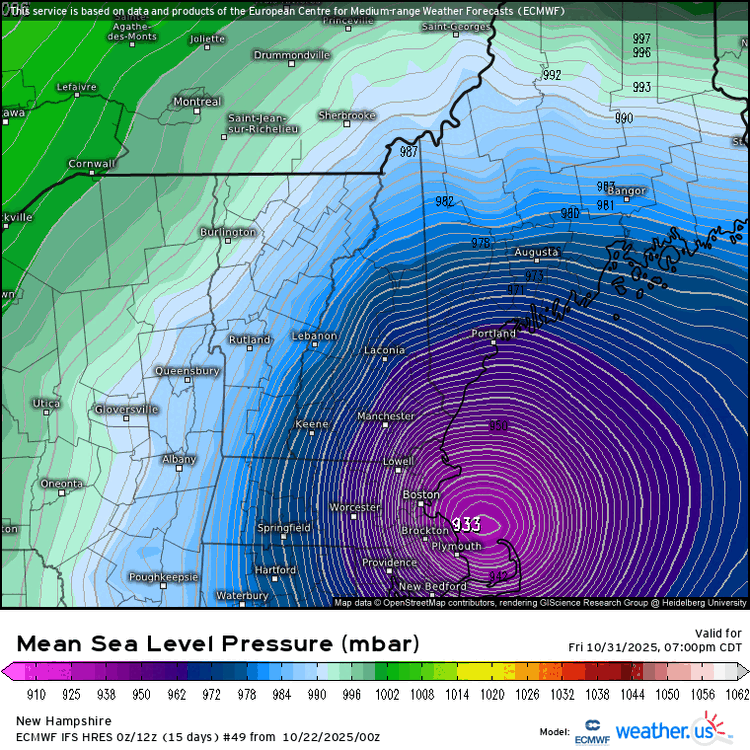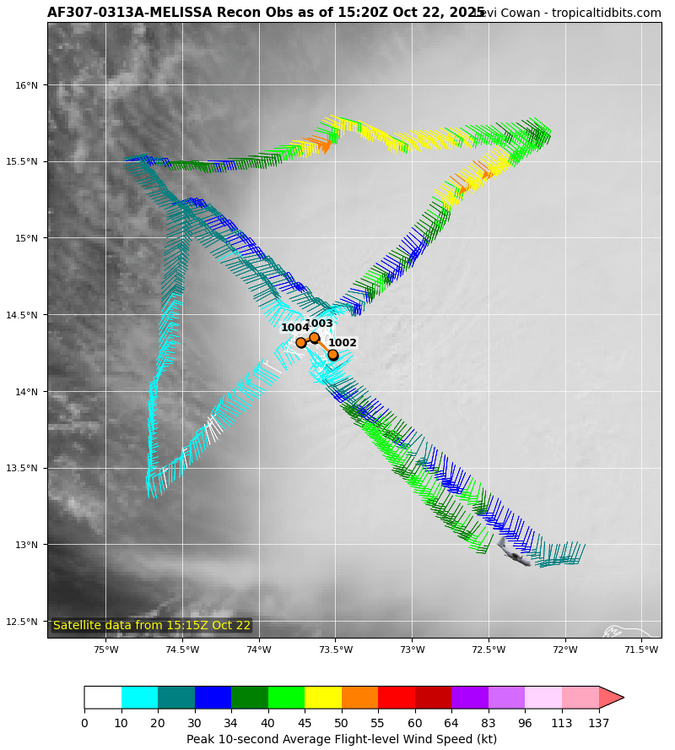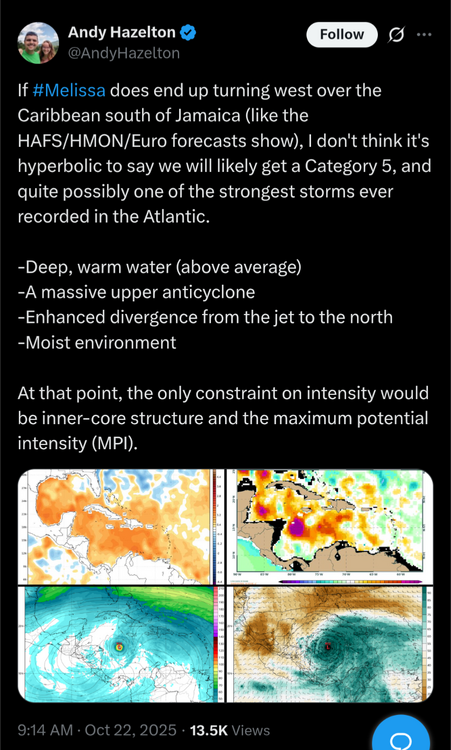All Activity
- Past hour
-
The 12z Cmc is probably just as far off with the track at 120hrs as the GFS, just in the opposite direction. If you average them you might get an accurate position somewhere southwest of Jamaica.
-
Spooky Season (October Disco Thread)
Typhoon Tip replied to Prismshine Productions's topic in New England
can you imagine Narragansett Bay .... ho man -
Yep, def feels like we have barreled into fall
-

Spooky Season (October Disco Thread)
CoastalWx replied to Prismshine Productions's topic in New England
Lets get that 50 miles west. -
Freeze watch up for parts of the piedmont. URGENT - WEATHER MESSAGE National Weather Service Baltimore MD/Washington DC 1153 AM EDT Wed Oct 22 2025 VAZ028>031-039-040-051-501-502-230000- /O.NEW.KLWX.FZ.A.0005.251024T0600Z-251024T1300Z/ Frederick VA-Page-Warren-Clarke-Madison-Rappahannock-Culpeper- Northern Fauquier-Southern Fauquier- 1153 AM EDT Wed Oct 22 2025 ...FREEZE WATCH IN EFFECT FROM LATE THURSDAY NIGHT THROUGH FRIDAY MORNING... * WHAT...Sub-freezing temperatures as low as 30 possible. * WHERE...Culpeper, Northern Fauquier, Southern Fauquier, Clarke, Frederick VA, Madison, Page, Rappahannock, and Warren Counties. * WHEN...From late Thursday night through Friday morning. * IMPACTS...Frost and freeze conditions could kill crops, other sensitive vegetation and possibly damage unprotected outdoor plumbing. (snip)
-

Spooky Season (October Disco Thread)
Torch Tiger replied to Prismshine Productions's topic in New England
Nobody knows -

Spooky Season (October Disco Thread)
dendrite replied to Prismshine Productions's topic in New England
-

Central PA Fall Discussions and Obs
mahantango#1 replied to ChescoWx's topic in Upstate New York/Pennsylvania
Let's talk about your life choices -

Spooky Season (October Disco Thread)
kdxken replied to Prismshine Productions's topic in New England
Nothing else going on. -
yeah it’s not guaranteed by any means. just looking for signs of changes
-
i would shift the mean trough axis a little further west given the stronger nina and a weaker indo-pacific warm pool this year. still a decent fit though.
-

Spooky Season (October Disco Thread)
Lava Rock replied to Prismshine Productions's topic in New England
0.49". right on the money -
0.34" here last night. Just enough to give the vegetable garden a watering.
-
Records: Highs: EWR: 86 (1979) NYC: 88 (1979) LGA: 83 (1979) JFK: 77 (1984) Lows: EWR: 30 (1940) NYC: 30 (1940) LGA: 33 (1940) JFK: 37 (2003) Historical: 1884: A drought which began in August, extended through September and continued until the last week October brought hardship to Northern, Central, and Eastern Alabama. The 22nd was the first day of general showers, and gentle rains fell from the 26th to the 29th. 1965 - The temperature soared to 104 degrees at San Diego, CA. Southern California was in the midst of a late October heat wave that year. Los Angeles had ten consecutive days with afternoon highs reaching 100 degrees. (David Ludlum) (The Weather Channel) 1969: The earliest and heaviest snow since October 1926 occurred in parts of northern New England. 12 inches fell at Rochester, NY, and in some mountain areas, more than a foot fell. There was limited skiing on some Vermont slopes on the 23rd. It set the October 24-hour record at Burlington, VT, with 5.1 inches, and the early season record at Portland, ME, with 3.6 inches. (Ref. AccWeather Weather History) 1985 - A guest on the top floor of a hotel in Seattle, WA, was seriously injured while talking on the phone when lightning struck. Several persons are killed each year when the electrical charge from a lightning bolt travels via telephone wiring. (The Weather Channel) 1987 - Yakutat, AK, surpassed their previous all-time yearly precipitation total of 190 inches. Monthly records were set in June with 17 inches, in September with 70 inches, and in October with more than 40 inches. (Sandra and TI Richard Sanders - 1987) Twenty-two cities in the eastern U.S., most of them in the southeast states, reported record low temperatures for the date. Morning lows of 30 degrees at Athens GA, 28 degrees at Birmingham AL, and 23 degrees at Pinson AL, were the coldest of record for so early in the season. (The National Weather Summary) Showers produced heavy rain in southern California, with amounts ranging up to five inches at Blue Jay. Flash flooding resulted in two deaths, ten injuries, and more than a million dollars damage. (The National Weather Summary) (Storm Data) 1988 - A "nor'easter" swept across the coast of New England. Winds gusted to 75 mph, and large waves and high tides caused extensive shoreline flooding. A heavy wet snow blanketed much of eastern New York State, with a foot of snow reported in Lewis County. (The National Weather Summary) (Storm Data) 1989 - A storm system moving out of the Gulf of Alaska brought rain to the Northern and Central Pacific Coast Region, with snow in some of the mountains of Oregon, and wind gusts to 60 mph along the Oregon coast. Six cities in Florida reported record low temp-eratures for the date, including Tallahassee with a reading of 34 degrees. (The National Weather Summary) (Storm Data) 1996: Flooding from a major weekend storm continued to close schools and businesses in New England. Five people were killed during the storm, which dumped up to 19.19 inches of rain at Camp Ellis, ME to set the state's all time rainfall record. 140,000 people in Portland, ME were without water due to a water-main break. The town of Exeter, NH was also without water as the state experienced its worst flooding event since 1987. In New Jersey, the flooding was reported to be the worst since Tropical Storm Doria in 1971. (Ref. AccWeather Weather History) Wichita Kansas picked up 0.2 inch of snow for its earliest measurable snowfall on record. Snow also fell in the Texas and Oklahoma Panhandles. As much as 8 inches fell at Boise City, Oklahoma, with 15 inches at the Cloudcroft Ski resort in the mountains of northern New Mexico. (Ref. AccWeather Weather History) 1997: Game 4 of the World Series between the Cleveland Indians and the Florida Marlins was the coldest game in World Series history. The official game-time temperature was 38 degrees at Jacobs Field in Cleveland. Wind chills as low as 18 degrees was reported during the game. 1998: Tropical Depression Thirteen formed on October 22 over the southwestern the Caribbean Sea. By the 24th, this tropical depression became Hurricane Mitch. This hurricane would rapidly intensify over the next two days, reaching Category 5 strength on the 26th. Hurricane Mitch would end up being the second deadliest hurricane in the history of the Atlantic Ocean. 2005: Hurricane Wilma, with sustained winds near 130 mph crossed the Yucatan Peninsula near Playa del Carmen. The hurricane caused severe damage to the homes of nearly 700,000 people, leaving 300,000 homeless and at least 7 dead. Some remote locations across the Yucatan reported over 60 inches of rain. (Ref. Wilson Weather History) 2006: A “sleeper” wave hit CA’s Freshwater Lagoon Beach (near Orick). A 4-yr-old girl was swept to sea, as was a woman who tried to save her; both drowned. Several times a year “rogue” waves unexpectedly sweep people from beaches as they break on C/N CA beaches. (Ref. Weather Guide Calendar with Phenomenal Weather Events 2011 Accord Pub. 2010, USA) 2007: A tropical air mass along the Atlantic Seaboard pushes the afternoon high temperatures 10 to 25 Fahrenheit degrees above the long-term average highs for the third week of October. Daily record high temperatures are tied or exceeded with 80°F readings at Montpelier, Vermont, and Millinocket, Maine. (Ref. WxDoctor)
-

2025-2026 ENSO
Stormchaserchuck1 replied to 40/70 Benchmark's topic in Weather Forecasting and Discussion
Here is what we get the Winter before an El Nino the following year -
Spooky Season (October Disco Thread)
Typhoon Tip replied to Prismshine Productions's topic in New England
I don't think you did... I mean, there's a non-zero chance that thing gets sucked into ...whatever the Euro's selling with that -NAO trough. This becomes a general Met concern Which, by the way folks ... -NAOs, particularly those over the western limb of the domain, which this 10 day period is exerting, is a correlation found with TCs ( in general ..) affecting the EC. I'm not fully convinced that some sort of hybrid or fusion deal can't evolve. Low probability, but it's not outside the envelope, either It's numerically/telecon Sandy like in some ways... but not exactly modeled as an analog in the synoptic handling at this time. As far as the upper tier category stuff... my intuition's telling me pump the breaks on that with the hostility in the region, and the fact that a trough pulling it out of the CAG region may induce that motion prior to the TC availing of superior deep layer circulation mode. The GFS has a fuller integrated TC and that's why it's initiating that escape so fast. The Euro apparently keeps it less coupled to the mid and u/a, so it drifts west and then gets a chancy window to RI ... I put that lower probability. But, I don't give a ratz ass about being wrong, either. ha Just the way I see. -
Occasional Thoughts on Climate Change
WolfStock1 replied to donsutherland1's topic in Climate Change
I don't see anywhere it saying that deaths have declined because of the climate becoming more stable - if you do please show it. "Benign" however is another matter. Yes part of the reason at least that deaths have decreased is in fact because it has become more benign. This is not due to the climate changing, but rather our ability to deal with climate-caused problems, like flooding, hurricanes, etc. has increased many-fold over the last 150 or so years. So in that sense yes - the climate has become more benign, and yes that has resulted in fewer deaths than otherwise. And yes - that is due in large part to the burning of fossil fuels - e.g. machinery in construction of dams to control flooding, construction of better buildings to withstand hurricanes, etc. It's due to better weather prediction capabilities due to satellites that are put into orbit by fossil-fuel-burning rockets. In short - greater prosperity brings less deaths, and the burning of fossil fuels has brought about greater prosperity. That is the point. You say "without these four variables the claim would be indefensible" - but you can't just remove variables that are key parts of the interconnected system like that! -
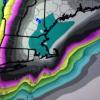
2025-2026 ENSO
40/70 Benchmark replied to 40/70 Benchmark's topic in Weather Forecasting and Discussion
Tricky part for me is I not only forecast the sensible weather, but the actual teleconnections, so this may matter to me more than most. Anyway, look forward to what you present. -
Pressure rising and wobbling southwest. Time to take GFS out back and shoot it. With king euro reigning, it'll be very interesting to see how strong this gets in the western caribbean sea.
-

2025-2026 ENSO
40/70 Benchmark replied to 40/70 Benchmark's topic in Weather Forecasting and Discussion
I think the course of least regret is incorporating La Niña analogs, but emphasizing variability with respect to the PNA....including some +PNA cool ENSO analogs, as well...such as 2024 and 2000, which are both stellar polar analogs. - Today
-
The million dollar question….does it actually make it into the PAC or does it die out in phases 6/7 and end up back in the IO? The end of month propagation to the Maritime Continent (finally) looks like a certainty now but the MJO has been exhibiting very erratic behavior for the past few months now with barely any eastward movement before it circles right back to the IO
-
Tropical Storm Melissa Discussion Number 5 NWS National Hurricane Center Miami FL AL132025 1100 AM EDT Wed Oct 22 2025 While Melissa continues to produce bursting convection on satellite imagery, with very cold cloud tops down to -95C, there is little evidence these convective bands are wrapping around the center. West-northwesterly shear of 20 to 25 kt is currently preventing the low-level and mid-level circulation centers from aligning. This downshear tilt with height has also been observed by the latest Air Force Reconnaissance mission, which reported significant winds at the surface in their most recent 850 mb center drop. The initial intensity for this advisory is held at 45 kt, taking a blend of recon observations which had a peak wind of 52 kt at 850 mb, and satellite intensity estimates from TAFB, ADT, and D-MINT. The wind field of Melissa also remains very asymmetric, as evidence of a recent 1040z RCM-1 Synthetic Aperture Radar pass showing the bulk of tropical-storm-force winds east of the center. The tropical storm has slowed down to a crawl this morning, with the estimated motion at 300/2 kt. The track forecast remains challenging today, and strongly related to the storm's structure in the short-term. For the next 12-24 hours, Melissa is forecast to move very slowly to the northwest as it attempts to move into a weakness produced by an broad upper-level trough centered over the Bahamas. Whether or not it turns more rightward into this weakness is related to the vertical depth the various model guidance is depicting. The 06z GFS run, which is the model that has been on the right side of the guidance envelope for days, shows a more vertically coherent system over the next 24-48 hours, and causes Melissa to abruptly turn northeastward over the next 48 hours. While this appears to be an outlier solution, the Google DeepMind ensemble mean (GDMI) also shows this northeastward motion, and a significant fraction of its ensemble members show the Melissa making landfall on the Island of Hispaniola. However, the remainder of the track guidance, including the ECMWF and its ensemble mean, suggest that Melissa will remain misaligned and move more slowly north-northwest over the next couple of days. The NHC track solution slightly favors the latter scenarios, lying just east of the ECMWF mean, out of respect of the reliable GDMI aid. After about 60 h, mid-level ridging begins to build back in to the north, and most of the guidance responds by showing a sharp turn westward, albeit still at a snail's pace. The overall track guidance, GFS and GDMI excluded, has shifted left this cycle beyond 72 h, and the NHC track was shifted in that direction, but not as far south and west as the HAFS-A/B regional models. It goes without saying, this is a very challenging track forecast. The intensity forecast has its own share of challenges. At least in the short-term, vertical wind shear is expected to persist between 20 to 30 kt, and will likely prevent Melissa from becoming fully aligned and taking advantage over the very warm 30-31C sea surface temperatures. After about 48 hours, the GFS and ECMWF-based SHIPS guidance shows the shear decreasing gradually, but the timing on when the system becomes more vertically coherent varies among both the global and hurricane-regional model guidance. Most of the guidance shows significant or even rapid intensification in days 3-5, and the NHC intensity forecast was raised once again during this time frame, but not as high as the HCCA or hurricane-regional models due to continuity constraints to the previous forecast. The day 5 forecast now shows Melissa becoming a major hurricane, and further upward adjustments may be necessary in subsequent cycles. The intensity forecast is also more uncertain than usual, in large part related to the track uncertainty. Key Messages: 1. Melissa is expected to produce heavy rainfall across portions of the Dominican Republic, Haiti, and Jamaica through this weekend, bringing a risk of significant flash flooding and landslides. 2. Hurricane conditions are possible in the southwestern peninsula of Haiti where a Hurricane Watch is in effect. A Tropical Storm Watch is in effect for Jamaica. Preparations to protect life and property should be completed by Thursday. 3. There is significant uncertainty in the track and intensity forecast of Melissa. Interests elsewhere in Hispaniola and Cuba should continue to monitor the latest forecasts. FORECAST POSITIONS AND MAX WINDS INIT 22/1500Z 14.4N 73.6W 45 KT 50 MPH 12H 23/0000Z 14.8N 73.9W 45 KT 50 MPH 24H 23/1200Z 15.2N 74.3W 50 KT 60 MPH 36H 24/0000Z 15.6N 74.4W 55 KT 65 MPH 48H 24/1200Z 16.0N 74.4W 55 KT 65 MPH 60H 25/0000Z 16.3N 74.6W 60 KT 70 MPH 72H 25/1200Z 16.5N 74.9W 70 KT 80 MPH 96H 26/1200Z 16.6N 75.8W 90 KT 105 MPH 120H 27/1200Z 16.4N 77.4W 105 KT 120 MPH $$ Forecaster Papin
-
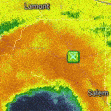
Spooky Season (October Disco Thread)
WxWatcher007 replied to Prismshine Productions's topic in New England
Sorry, didn’t mean to derail the thread… -

Spooky Season (October Disco Thread)
WxWatcher007 replied to Prismshine Productions's topic in New England
Yeah the shear is unquestionably there currently and will remain, I don’t doubt that, but in a few days as Melissa shifts west and the ULAC becomes the predominant feature, that’s when the window for explosive development is most likely. Still not a guarantee, but looking increasingly likely. Ironically, it’s the 20-30kt of shear now that is keeping Melissa from becoming vertically aligned that will probably lead to a further west track. Melissa can’t muster a sprint into the weakness to its north. From the latest NHC forecast The intensity forecast has its own share of challenges. At least in the short-term, vertical wind shear is expected to persist between 20 to 30 kt, and will likely prevent Melissa from becoming fully aligned and taking advantage over the very warm 30-31C sea surface temperatures. After about 48 hours, the GFS and ECMWF-based SHIPS guidance shows the shear decreasing gradually, but the timing on when the system becomes more vertically coherent varies among both the global and hurricane-regional model guidance. Most of the guidance shows significant or even rapid intensification in days 3-5, and the NHC intensity forecast was raised once again during this time frame, but not as high as the HCCA or hurricane-regional models due to continuity constraints to the previous forecast. The day 5 forecast now shows Melissa becoming a major hurricane, and further upward adjustments may be necessary in subsequent cycles. The intensity forecast is also more uncertain than usual, in large part related to the track uncertainty.





